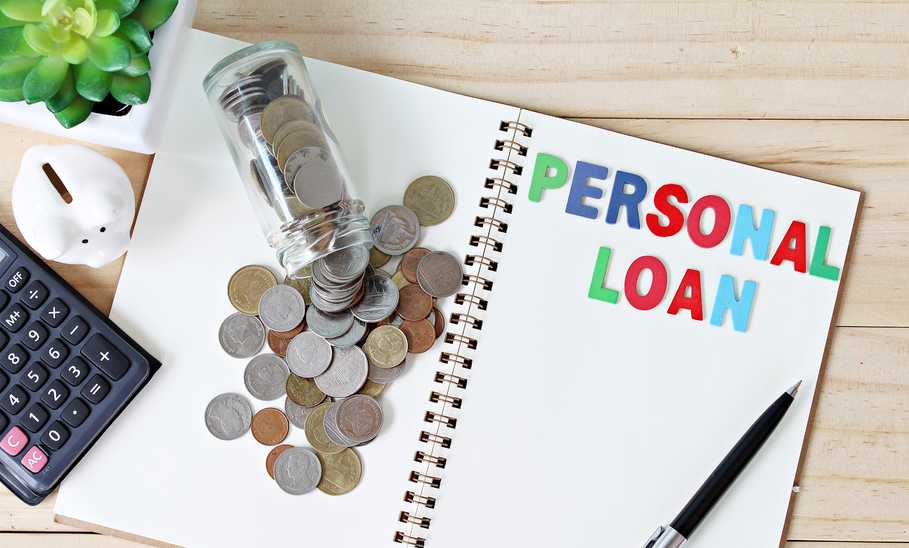What Is a Personal Loan


Our evaluations and opinions are not influenced by our advertising relationships, but we may earn a commission from our partners’ links. This content is created by TIME Stamped, under TIME’s direction and produced in accordance with TIME’s editorial guidelines and overseen by TIME’s editorial staff. Learn more about it.
Whether you need to consolidate debt, pay for an unexpected home repair, or cover a medical bill, a personal loan could help. Personal loans typically have fixed interest rates and repayment terms of up to a few years. These loans can be used for almost any purpose. While this flexibility is useful, it’s wise to only apply for a personal loan if you have a necessary expense to cover.
Here’s what you need to know about personal loans, including how they work, their rates, how to qualify for one, and more.
Personal loans are a type of installment loan, as they usually have a fixed rate and a set repayment schedule. You’ll generally make fixed payments toward your personal loan each month, with the size of your payment depending upon your initial loan amount and repayment term.
While personal loans can vary depending on your lender, here are some commonalities you’ll likely encounter.
Individual lenders determine personal loan rates, which are influenced by the Federal funds rate—a target rate for which banks can borrow and lend to each other. When the federal funds rate increases, personal loan rates are likely to increase. The Federal Reserve sets the funds rate eight times a year.
Personal loan rates are partly influenced by your credit history. If you have excellent credit, your interest rate will likely be on the lower end of the available range. If your credit isn’t great, you may receive a higher rate.
You can use a personal loan for a broad range of purposes. Common uses include:
You can also use a personal loan to finance a vacation, though it’s a good rule of thumb to only apply for a loan to cover an essential cost. Some lenders place a few restrictions on personal loan uses, so that’s important to be aware of. Depending on the lender’s guidelines, you can’t use a personal loan for higher education costs or to invest. It goes without saying that you can’t use a personal loan for illegal activities or gambling.
If you’re considering a personal loan, avoid the following common mistakes to help ensure you don’t get over your head financially.
A personal loan could be a good idea for consolidating debt or covering another essential cost. These loans can help spread out your expenses over time, generally at lower rates than credit cards.
Different lenders may have different requirements for borrowers seeking a personal loan.
Generally, you’ll need to:
If you’re interested in a personal loan, there is no shortage of options available, and you can often apply online. The first step you’ll want to take is to compare loan options from different lenders. After that, you can narrow down your choices and apply for the best personal loan for your situation.
You’ll need to provide detailed personal and financial information during the application process. Your lender will likely ask for your name, address, email, phone number, Social Security number, employer and employer contact information, and monthly income. You may also need to provide copies of bank statements, W-2s, and past tax returns.
Once you’ve applied, your lender will do a hard credit check. This involves reviewing your credit report and score to assess your overall creditworthiness. A hard credit pull will cause your credit score to decrease by a handful of points.
After that, you’ll receive your loan decision. If approved, your lender should disburse your loan funds fairly quickly—often as soon as the same day, but sometimes within a few business days.
As mentioned, comparing personal loan offers is crucial before applying for a loan. You’ll want to look at the following factors for an effective comparison.
Personal loans offer flexibility, fast disbursement, and relatively low fixed rates. While there are many benefits to this type of financing, you’ll still want to compare loan options to find the best one for your needs. Consider rates, loan amounts, terms, fees, and requirements as you research potential lenders.
Lenders do a hard credit pull when you apply for a personal loan. This can result in minor damage to your credit score, but it’s usually temporary. Over the longer term, a personal loan may help boost your credit if you pay on time and in full each month. It could also make it easier to pay down high-rate debt.
A personal loan is generally only bad for your credit if you don’t make the monthly payments or pay late. Your lender will report your payments to the major credit bureaus, and delinquencies can harm your credit score.
A major benefit of personal loans is that they can be used for almost any purpose. They have fixed interest rates and predictable payments, and they’re often disbursed within days of applying.
The information presented here is created by TIME Stamped and overseen by TIME editorial staff. To learn more, see our About Us page.



